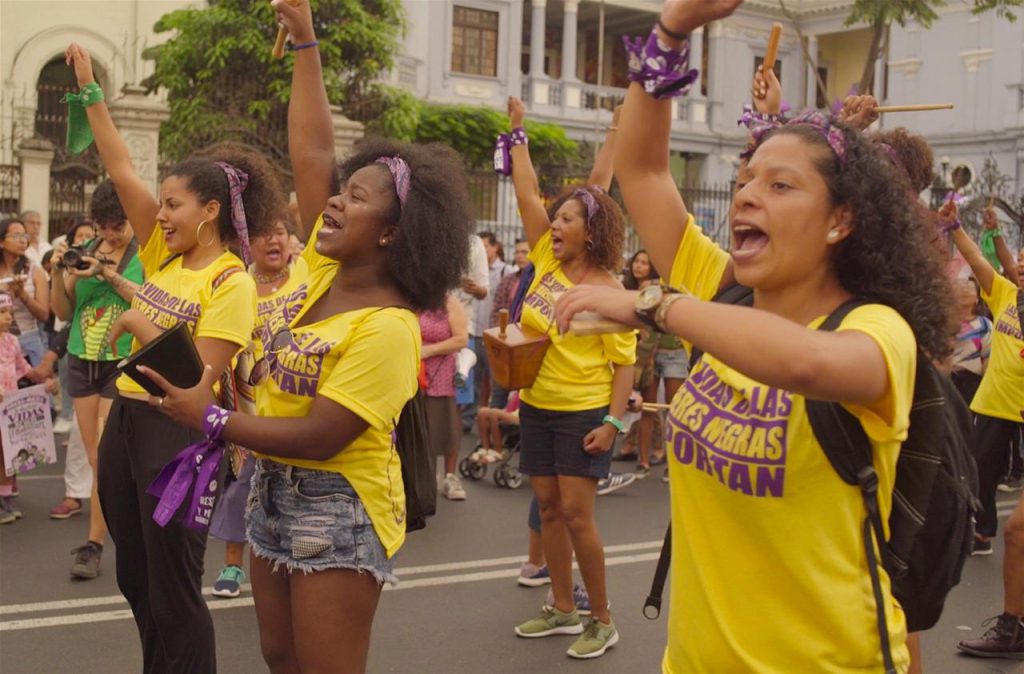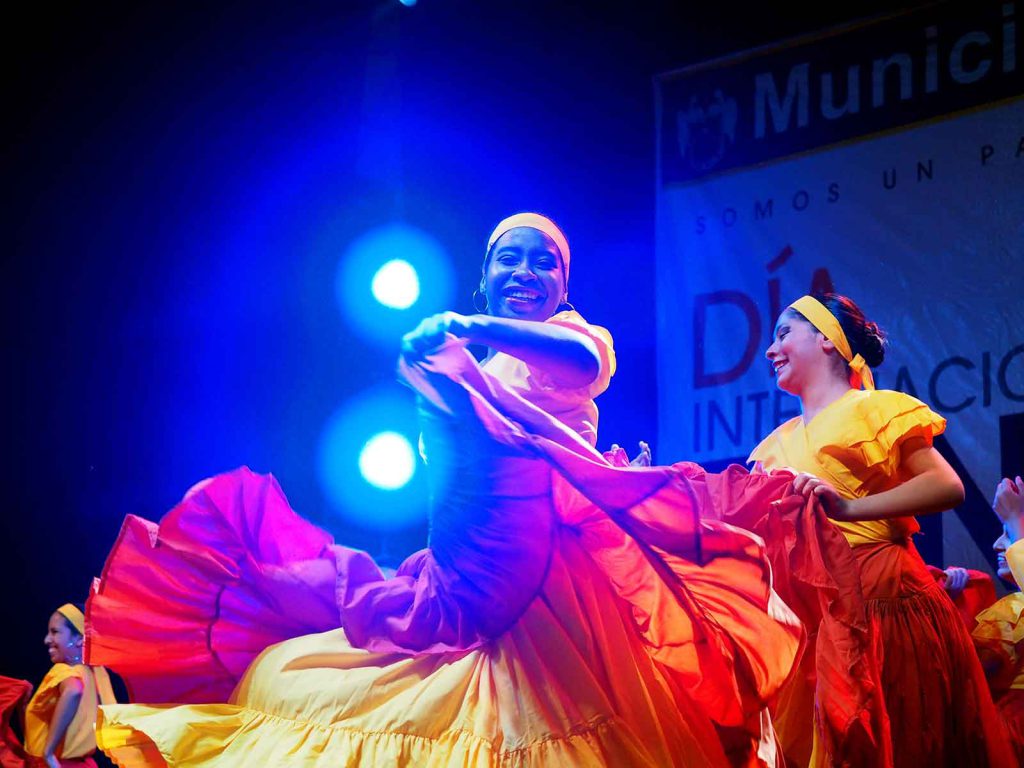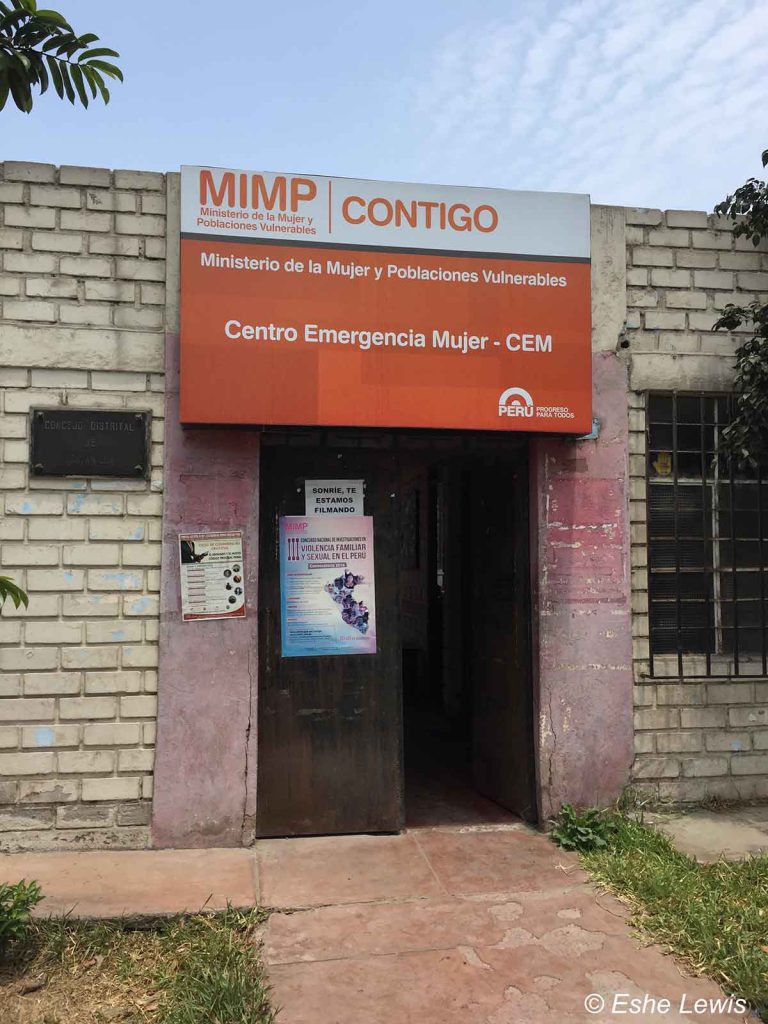When Black Female Victims Aren’t Seen as Victims

Read this article in Spanish.
Clara* ended the call and clasped the phone between her dark hands as she smiled shyly and resumed her recount of the events that had brought her to the women’s emergency center. Her boyfriend, César,* was a violent man, she said. In his fits of rage, he punched and choked her, but she only decided to report him after he fired gunshots through her living room window. The bullets barely missed their young son.
Over the course of my anthropological research in Peru, I heard many such stories of violence against Afro-descendant women who are identified as black. (There are Afro-Peruvians who are white or mestizo and thus don’t face this same type of discrimination.) Most were disclosed in quiet conversations, divulged as the experiences of acquaintances or distant relatives, or talked about in vague terms. Black women’s experiences of violence tend not to be featured on radio or television shows, or in public debates about Peru’s alarming rates of violence against women. Long-running stereotypes paint these women as violent and hypersexual. This has a significant impact: While women of other backgrounds are more readily understood as victims, black women are often portrayed as aggressors.
There are many social movements today calling attention to the abuse and murder of women, and encouraging survivors of abuse to speak out—including the #MeToo movement, which started in the U.S., and #NiUnaMenos (#NotOneLess) in Latin America (meaning “not one less woman alive” or, more naturally in English, “not one more victim”). Yet, at the same time, deep-seated inequality continues to dictate which stories garner attention and which women are seen as needing support.
From 2013 to 2016, I interviewed and observed Afro-Peruvian women who had reported cases of intimate partner violence in Centros Emergencia Mujer, or women’s emergency centers, in Lima and Callao, Peru. Intimate partner violence (IPV) is defined as sexual, psychological, physical, and/or economic violence by a current or previous romantic partner. I also spoke with the staff at these centers, with Afro-Peruvian female activists, and with state representatives. Their perspectives, experiences, and stories reveal the reality of abuse against black women—and these women’s struggle to have their stories be seen and heard in a society that believes these women are too strong and too sexually available to be abused.
Regionally, Latin America and the Caribbean have the second highest rates of IPV in the world. According to the results of the Demographic and Family Health Survey (ENDES) in Peru, in 2017, 65 percent of partnered women reported having been abused sexually, psychologically, and/or physically.
In Peru, IPV has historically been viewed and characterized as a normal part of relationships and as an appropriate way for men to correct women’s bad behavior. Ultimately, it’s seen as the private business of the couple in question. Because of these justifications, women were long discouraged from speaking out about this kind of violence.
This is starting to change. Over the past few decades, there has been a growing outcry for reform in the police force and the justice system, both of which have been accused of blaming the women who come forward to report their experiences. Civil society organizations have rallied around women and girls who have been abused and thrust their cases into the limelight, pressuring the state to take decisive action. Public outrage was heightened after the cases of two men were decided three years ago: Adriano Pozo Arias, a man caught on tape abusing his girlfriend, was sentenced to just one year of “suspended imprisonment,” which consisted of periodic reporting to the judicial system and no jail time. Ronny García only served 15 months in prison and then was sentenced to four additional years of the same minimally punitive sentence (suspended imprisonment) after he was convicted of aggravated domestic violence against his former girlfriend.
These widely publicized cases, and others, sparked the #NiUnaMenos march that took place in 2016—the largest demonstration in Peruvian history. Today local media outlets pay more attention to this issue; there are even programs dedicated solely to talking to women—and, at times, confronting their abusers.
Even so, during my research I noted little mention of race in these discussions—an observation that was shared by many of my research informants. Although race has no biological validity, it remains socially and politically relevant as a concept generated during European colonization. Race became a way to group and rank human beings according to specific physical attributes. As a social construct, race continues to uphold inequalities in access to education, health care, political participation, and quality of life. Many media outlets in Peru continue to skirt around the ways in which women’s experiences with violence and justice differ due to social markers such as class, geographic location, culture, or race. Rather, women are inadvertently portrayed as a monolithic group, and the mestiza woman in Peru—a woman of Indigenous and European ancestry—is viewed as the “average” woman and is therefore racially “neutral.”
“Afro-Peruvian” as an identity category refers to people who self-identify or are identified as black or of African descent. It is a political umbrella term that encompasses a diverse group of people and communities who can be called Afro-Peruvian for different reasons. The term is often synonymous with “black,” and socially, members of this group tend to be identified by physical traits that include wide noses, dark skin, tightly coiled or curly hair, and large lips. But due to the high rate of interracial marriage and mixing, many people who are of African descent do not possess these physical traits. Some identify as Afro-Peruvian because their cultures and sense of collective identity have been deeply influenced by Africans, despite the fact that they may not physically be identified or self-identify as black.
People who belong to this group use a variety of different terms to describe themselves; some use the identifiers “Afro-Peruvian” or “Afro-descendant,” while others do not. Still others use a combination, such as Afro-descendant and black. In this context, Afro-Peruvian women who are identified as black are largely left out of domestic violence discourse.
Afro-descendants in Peru have contributed significantly to shaping many aspects of Peruvian society. Due to widespread urban enslavement during the colonial period, Lima was considered a “black city” because of the sheer volume of Africans and their descendants who lived there, both in bondage and freely. As a result, Africans and their descendants influenced many facets of Peruvian society, including culture, politics, the economy, the independence process, and the creation of the new nation. The national dance of Peru, the marinera, would not exist if not for the contributions of African dance styles, and Peruvian Spanish has linguistically been influenced by numerous African languages. An example is the word cachivache(s), which is the term for knickknacks.
However, the impact of Afro-descendants was largely erased from public discourse and from the historical record due to systemic and cultural racism. This population does not fit into the neatly packaged portrayal of Peru as the home of Machu Picchu, the crowning jewel of the Inca empire, or part of an Indigenous Andean culture that tourists expect to see. While the government has made considerable inroads in recognizing the legacy of African descendants in Peru, socially, there is a notable lack of knowledge about this group in the larger society and elsewhere.
Two stereotypes about black women hinder a broader recognition of the victimization of some of these individuals: their perceived aggressive nature and their sexual promiscuity. These myths were founded during the enslavement period, when they were used to justify black women’s condition as property. Because women were portrayed as aggressive, it was argued to be appropriate and necessary to beat, own, and torture them. Because they were said to have voracious sexual appetites, it was deemed acceptable for the women’s masters to engage in sex with them whenever they chose to. These stereotypes prevail today—including in the United States, where they have shaped the public opinion that young black girls need less affection and are more knowledgeable about sexual activity than their white peers.
For activists, the aggression they encounter has as much to do with their blackness as it does their gender.
Even food packaging, cartoons, and television shows reflect these stereotypes. Black women are portrayed with outrageously curvaceous bodies that are almost always scantily clad and in sexually suggestive positions. Sibarita, a famous brand of condiments that is commonly found in Peruvian homes, features a young, curvaceous black woman on packets of black pepper who is dressed in a miniskirt. Alternately, black women are depicted as being angry and are seen yelling or fighting, and, inevitably, winning.
Afro-Peruvian activists have worked tirelessly to change public opinion and bring about important sanctions to protect women. Their stance on ending violence against women includes calling attention to the way that other aspects of women’s identities, such as their culture and physical appearance, play into the harassment many women face. For these activists, the aggression they encounter has as much to do with their blackness as it does their gender.
Sofia Arizaga, a veteran activist, told me that she often walks down the street with earbuds in to shut out comments men whisper and shout to her. They call out negra (black) or morena (brown) in a sexually suggestive manner, she said, and have even approached her asking, “How much?,” assuming that she is a sex worker and inquiring about her rates. I heard endless variations of stories of similar experiences from other women I spoke to, and I lived such incidents myself as a black woman moving through the streets of Lima. Harassment on the basis of gender and racial identity are daily occurrences, though they seem invisible to people who do not experience them firsthand.
The women I spoke to also expressed frustration at the way their actions were interpreted according to stereotypes. Veronica,* a young woman who had reported her boyfriend for hitting her, told me that even her mother, who was white, always scolded her for appearing to be loud and aggressive. Veronica told me how she had to be careful not to get too excited around her mother, who would cover her ears and tell her daughter to “stop shouting like a black woman.”
In 2015, Peru’s Ministry of Women and Vulnerable Populations began to collect ethnicity data about women who report violence. (Although race remains a relevant concept to understand social inequality, the government has shifted away from discussions of race and focused instead on ethnicity. While this term can be difficult to separate from race, ethnicity broadly refers to cultural differences such as language, traditional dress, and practices that are often associated with particular geographical locations.) As a result, Clara and about two dozen other women and children are officially recognized as Afro-Peruvians who have been abused. (I spoke to half of them for my research.) Most of the government’s data isn’t public, and the findings likely vastly underrepresent the real number of black women suffering IPV. Aside from the complex issues and problems associated with recording race and ethnicity, there are additional barriers for women of African descent in deciding to report intimate partner violence.
These women find themselves in a difficult predicament: The prevalent stereotype that aggression and sexuality are the core—if not the only—components of their identities makes it very difficult for society to see them as the victims of violence. Rocío Muñoz, an Afro-Peruvian feminist activist, spoke to me about the added social risk for black women who consider speaking up. Since domestic violence is not supposed to happen to them, these women face an identity crisis. As Muñoz puts it, they think to themselves, How can I be a black woman if I am hit? So when it happens to them, they don’t talk about it.
Members of Presencia y Palabra, an Afro-descendant women’s collective, expressed how difficult it is to speak about sexual assault as black women because of how convinced civil society is that black women are sexually insatiable. If in the past anyone could have access to these women’s bodies because they were viewed as public property, then how, members asked, could women who have endured violence talk about harassment or rape that happened now? This problem goes to the heart of the idea of body autonomy; if these women’s bodies belong to anyone who wants them, then the women have no power to give or retract consent. If all attention is assumed to be welcome, then it stands to reason that black women cannot be violated.
These social forces hide the realities of Afro-descendant women who are black and experience IPV that at times is so severe some women have reported cases of attempted femicide, the murder of women because of their gender. Two of my research informants had been stabbed by their partners and choked until they fell unconscious. Another was hospitalized and underwent multiple surgeries to heal severe internal injuries.
Dedicated efforts to understand Afro-Peruvian women’s unique experiences with violence, to help provide protection for them, and to work to bring about social and policy changes that can help stop further violence must take into consideration the impact and historical context of race and gender. Without accounting for how these shape black women’s experiences, many Afro-descendant women’s stories disappear into a monolithic “women’s experience” that continues to promote racist and sexist cycles of silencing pain. This must change; justice for women like Clara depends on it.
*Names marked with an asterisk have been changed to protect people’s privacy.


































